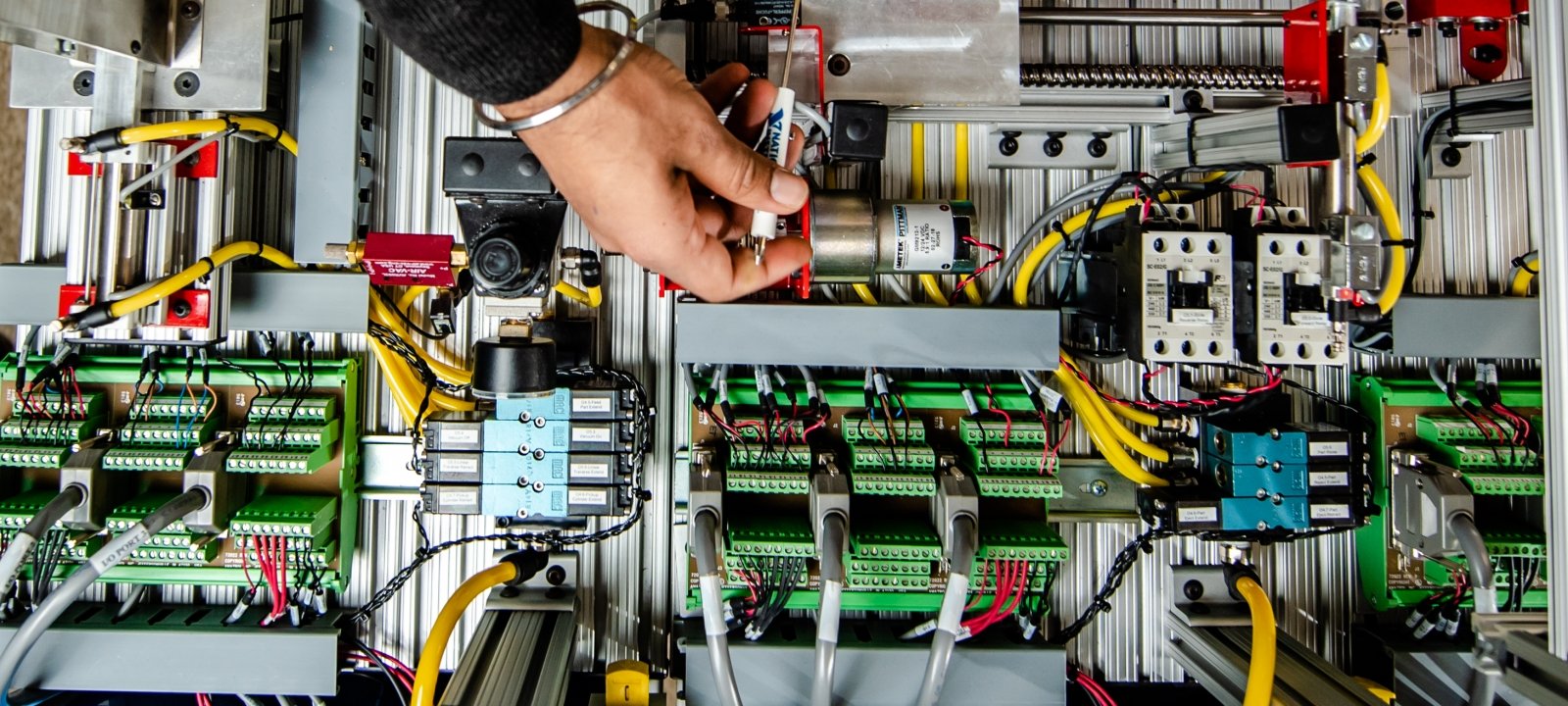AVR Voltage Regulator Self Powered Generator:
It can be said that in three-phase synchronous generators, each coil represents a phase of the 3-phase. There is a relationship between the rotational speed of the generator Ns, the number of poles of the generator P and the frequency of the generated current F:
F=Pns / 120
In the case that the generator has a speed of 3000RPM per minute and the number of poles is 2 then in this case the frequency will be equal to:
F=Pns/120 = 2*3000/120 = 50HZ
The voltage of the generator terminals depends on 3 factors:
- The rotational speed of the generator, which is constant to maintain the stability of the frequency.
- The field current of the IF magnets.
- The number of turns of the rotating magnetic field coil, which is fixed, we find that the speed of the generator role is constant and the number of turns of the magnetic field is constant, so it is possible to control the generator output from the field current through an electronic regulator known as the AVR through which the field current is increased or decreased.
automatic voltage regulator :
As we mentioned in the previous lecture, the synchronous generator with self-powered voltage regulator AVR:
We find that the voltage regulator AVR is comparing the output of the main generator with the voltage of the calibrated reference on it. The AVR says that the output voltage of the main generator is less than what is required, so it increases the voltage of the coils of the field coils of the special generator for excitation, so the value of the voltage increases on the ends of the coils of the alternating current generator and is done Unifying this output and feeding it to the coils of the main generator field, the voltage rises on its edges, and we get the required effort.
There is a relationship between the voltage of the three ends of the generator and the field current in the case of No-load. The higher the field current, the higher the voltage of the terminals, but this relationship is not a linear relationship until the value of the field current reaches the saturation phase, and then saturation occurs for the generator, so the output becomes almost constant no matter how much the field current increases .
- stator of main generator .
- rotro of main generator .
- Rectifier .
- Rotor of exiter generator .
- Stator of exiter generator .
- AVR .
- L1 .
- Potentiometer .
- Output of AVR .
- L2 .








0 Comments